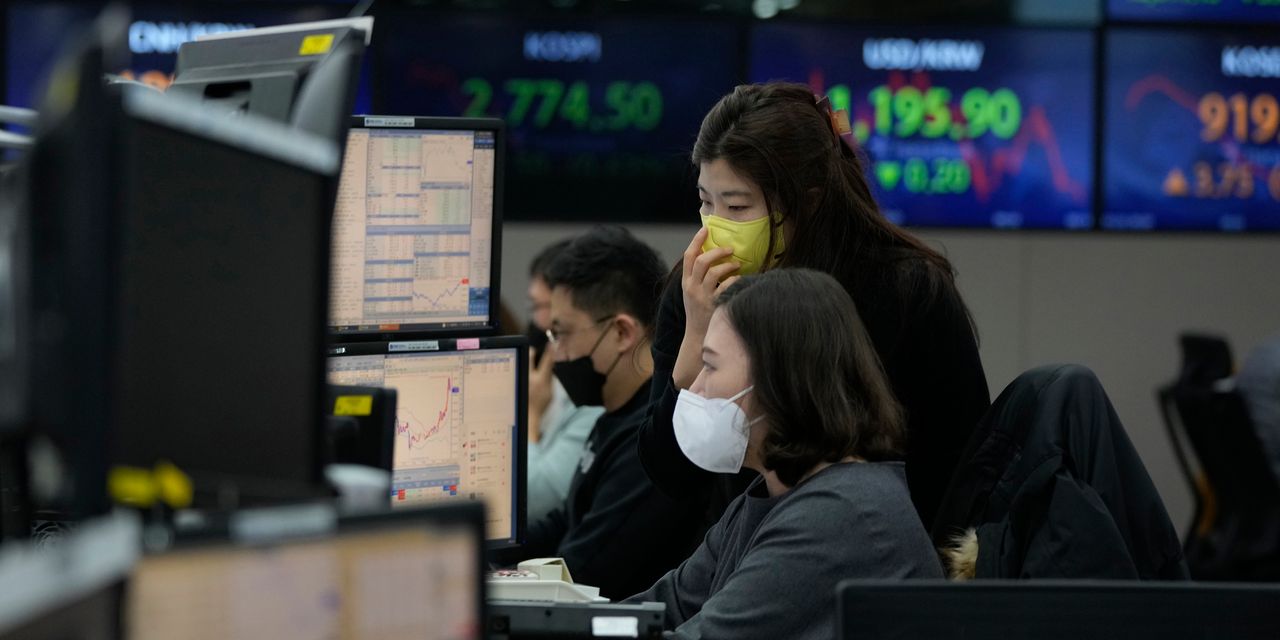
Global equity benchmarks and futures on key indexes fell, suggesting U.S. markets could come under fresh pressure on Tuesday after starting the week with a roller-coaster trading session.
Market volatility has picked up in recent sessions, as investors have grown anxious about how rapidly the Federal Reserve will act to combat inflation by raising interest rates and shrinking its balance sheet.
U.S. markets whipsawed Monday, with the Nasdaq Composite declining as much as 4.9% before rallying to close 0.6% higher. The S&P 500 and Dow Jones Industrial Average also staged similar comebacks.
The turbulent trading “showed that investors are facing a dilemma,” said Tai Hui, Asia chief market strategist at J.P. Morgan Asset Management.
Investors are anxious about U.S. monetary policy and how that could affect pricier stocks, he said, having moved quickly to price in four or more interest rate increases this year. On the other hand, the economic growth outlook for 2022 is still decent and investors are aware that few assets offer the same long-term return prospects as equities, Mr. Hui said.
By midafternoon Tuesday in Hong Kong, futures tied to the Dow, S&P 500 and Nasdaq-100 stood 0.8% to 1.3% lower, while regional equity indexes were broadly lower.
Japan’s Nikkei 225 closed down 1.7%, with major decliners including the technology and telecom giant SoftBank Group Corp. , which fell more than 5%. Australia’s S&P/ASX 200 and South Korea’s Kospi Composite both retreated more than 2%.
Hong Kong’s Hang Seng Index shed 1.6%, with banks HSBC Holdings PLC and Standard Chartered PLC falling 2.4% and 2.9%, respectively. The CSI 300 index of large stocks listed in mainland China pulled back 1.3%.
U.S. markets are likely to remain volatile at least until the Fed’s first rate increase, which is widely expected to be in March, said Jason Liu, the Asia head of the chief investment office at Deutsche Bank’s international private bank.
His team cut their stance on U.S. stocks, reflecting both their own holdings and their investment recommendation to clients, to neutral from overweight last week, after maintaining an overweight position for more than a year.
Fed policy makers are meeting on Tuesday and Wednesday this week and are set to resume discussions about how fast they will shrink their nearly $9 trillion bond portfolio.
“Everyone will be watching the Fed’s guidance this week,” Mr. Liu said.
The yield on the benchmark 10-year U.S. Treasury note rose 0.029 percentage point to 1.764%, according to Tradeweb. Bond yields move inversely to prices.
Bitcoin was quoted at $35,982, according to CoinDesk, or about 2.4% lower than late afternoon Monday in New York, when it stood at about $36,851.
Write to Rebecca Feng at [email protected] and Quentin Webb at [email protected]
Copyright ©2022 Dow Jones & Company, Inc. All Rights Reserved. 87990cbe856818d5eddac44c7b1cdeb8








